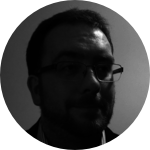About This Project
This project seeks to investigate how sound is generated during the impact of two objects.
The knowledge generated will then be used to address the question 'can the structure and quality of a surface or material be inferred using the acoustic output from an impact test'.
Ask the Scientists
Join The DiscussionWhat is the context of this research?
The origins of the topic are generally attributed to Hertz, in the 1880s, who considered the importance of elasticity on the contact area between static bodies under a compressive load. The generation of sound from impact is relatively unexplored. An impact will produce body and surface waves in the material, the velocity and characteristics of which depends on material properties including density and modulus. Thus, measurement of acoustic and body waves resulting from the impact can reveal information about the properties of the material and its surface.
What is the significance of this project?
Understanding how sounds are created during impact is an underdeveloped area of research. It is anticipated that this multidisciplinary project will generate considerable insight into the fundamental mechanisms which are involved in the process. The applications of the research include the ability to infer physical properties such as structure and elasticity via rapid, non-destructive measurements.
What are the goals of the project?
1. To investigate the acoustic response created during the impact of a sphere onto the planar surface of an engineered material.
2. To use simultaneous acoustic, optical, and force measurements to generate as complete an understanding as possible about how sound is generated during impact.
3. To compare the results of experimental measurements with theory and simulations.
Systems of increasing structural complexity will be explored, including but not limited to:
a) Porous or biphasic substrates
b) Substrates laminated with one or more solid layers, or a thin liquid film
c) Rheologically complex substrates such as powder beds, with and without liquid bridges between powder particles
Budget
Spherical probes will be dropped under gravity and allowed to impact normally (i.e. perpendicularly) on the planar surface of a solid substrate. The mechanical properties, geometry, surface roughness, and surface energy of the probe and surface will be quantified and varied. The acoustic response, impact force, and coefficient of restitution (i.e. rebound height of the impacting sphere) will be measured.
The budget items are required in order to assess the force between the two bodies upon impact. High speed data logging will provide Force -vs- Time information with sub-millisecond resolution. This will allow us to construct an energy balance model for the system. It will also permit correlation between the impact force and the acoustic response for a wide range of materials and substrates.
Endorsed by
 Project Timeline
Project Timeline
Late 2017: Establish the critical parameters which affect the sound generated during probe/surface impact; Report #1 published
Early 2018: Visit the research laboratories; remote sessions available
Mid 2018: Expressions of interest for collaborative projects
Late 2018: Thorough analysis of the impact sound created by the systems of increasing structural complexity; Report #2 published
Early 2019: Begin collaborative projects
Jun 11, 2017
Project Launched
Dec 01, 2017
Report #1 distributed to project backers
Mar 01, 2018
Invitation to visit the research laboratories
Nov 01, 2018
Report #2 will be distributed to project backers
Meet the Team
James Bowen
James currently holds the position of Lecturer in Materials Engineering at the Open University. His primary research interest is developing novel methods of materials characterisation.
He has established collaborations with researchers across the chemical, physical, biological, and medical sciences. These often employ micro/nanometrology and micro/nanomechanical characterisation techniques.
James established the Science City Advanced Materials laboratory in the School of Chemical Engineering at the University of Birmingham, a custom-built facility which housed equipment suitable for the characterisation of surfaces and materials.
He has worked extensively with a wide range of companies, particularly those in the automotive, fast-moving consumer goods, and technology sectors.
Additional Information
The results of this project will be used to develop systems for measuring the physical properties of complex materials and materials in complex environments. For example:
1. Measuring the mechanical properties of samples used for regenerative medicine, which require non-destructive testing.
2. Measuring the mechanical properties of soils, extending the analysis to incorporate assessment of porosity and moisture.
Further, we are keen to explore 'the psychology of impact sound' with interested collaborators.
Project Backers
- 4Backers
- 4%Funded
- $174Total Donations
- $43.50Average Donation


